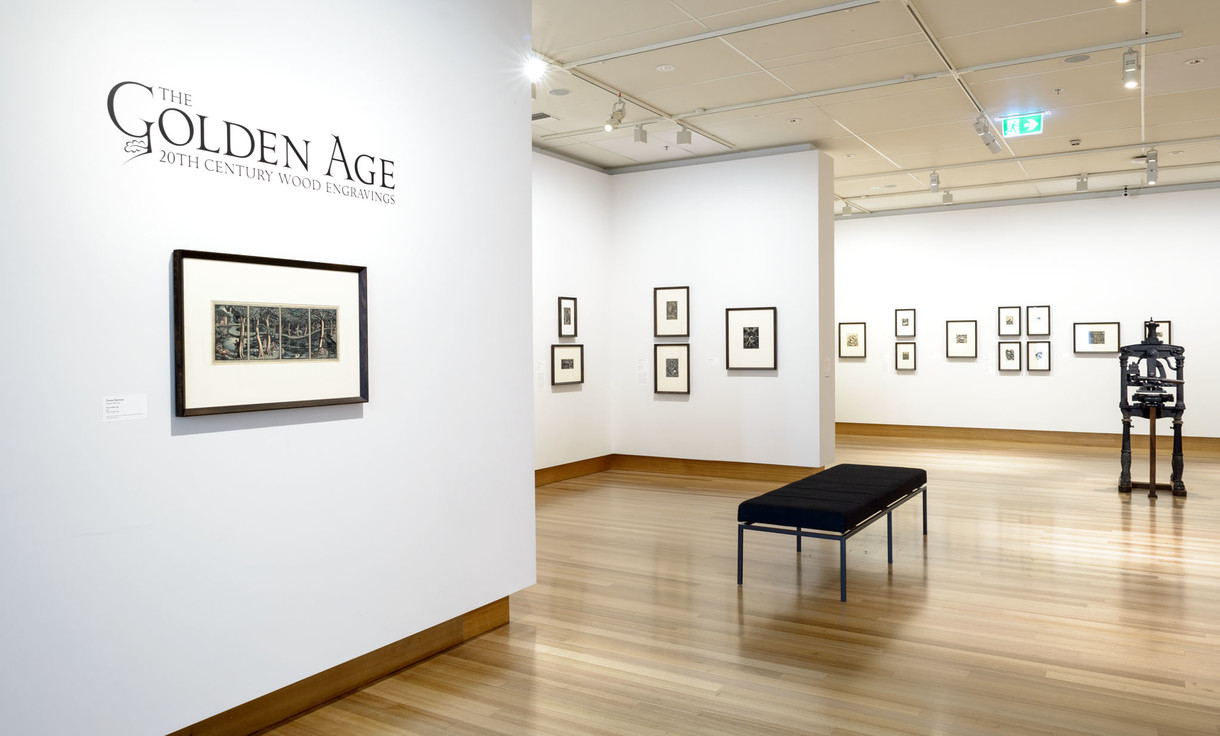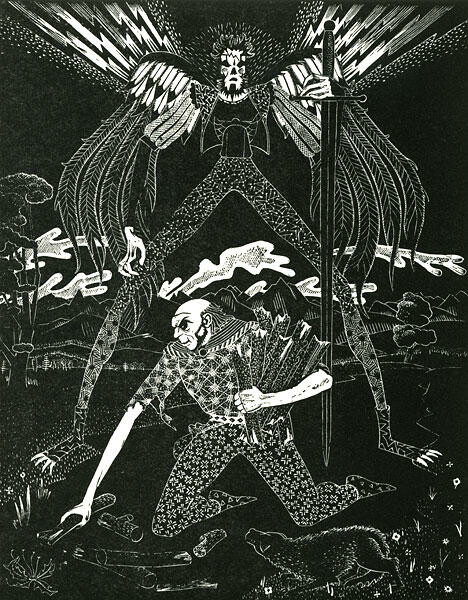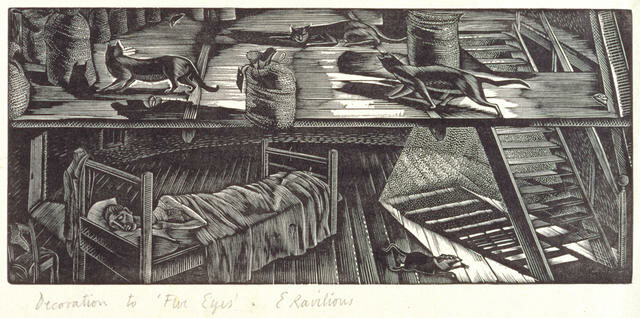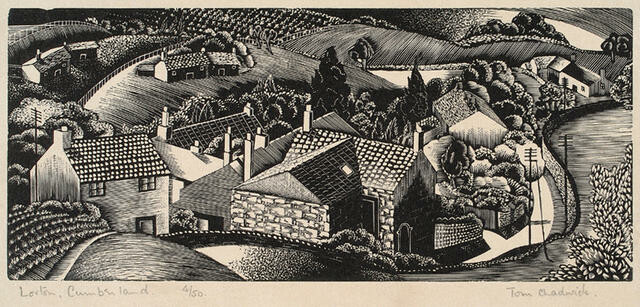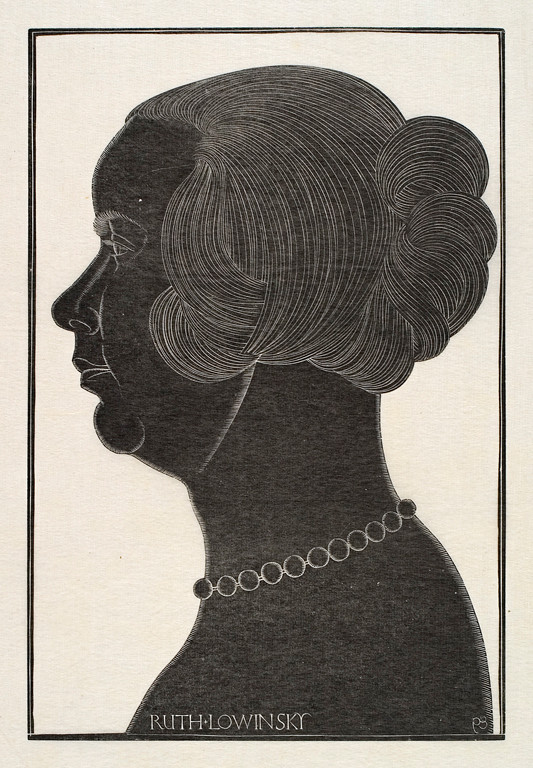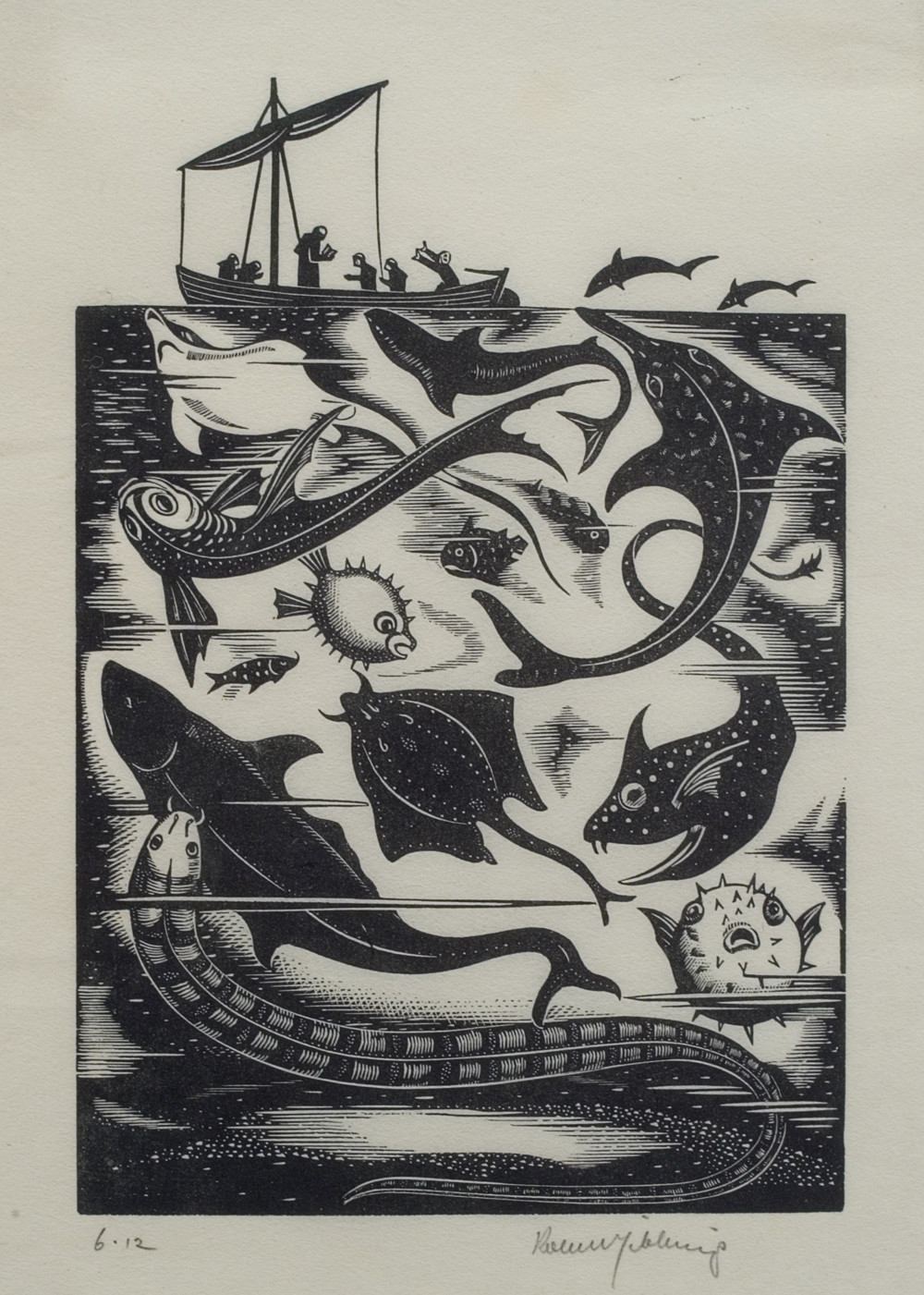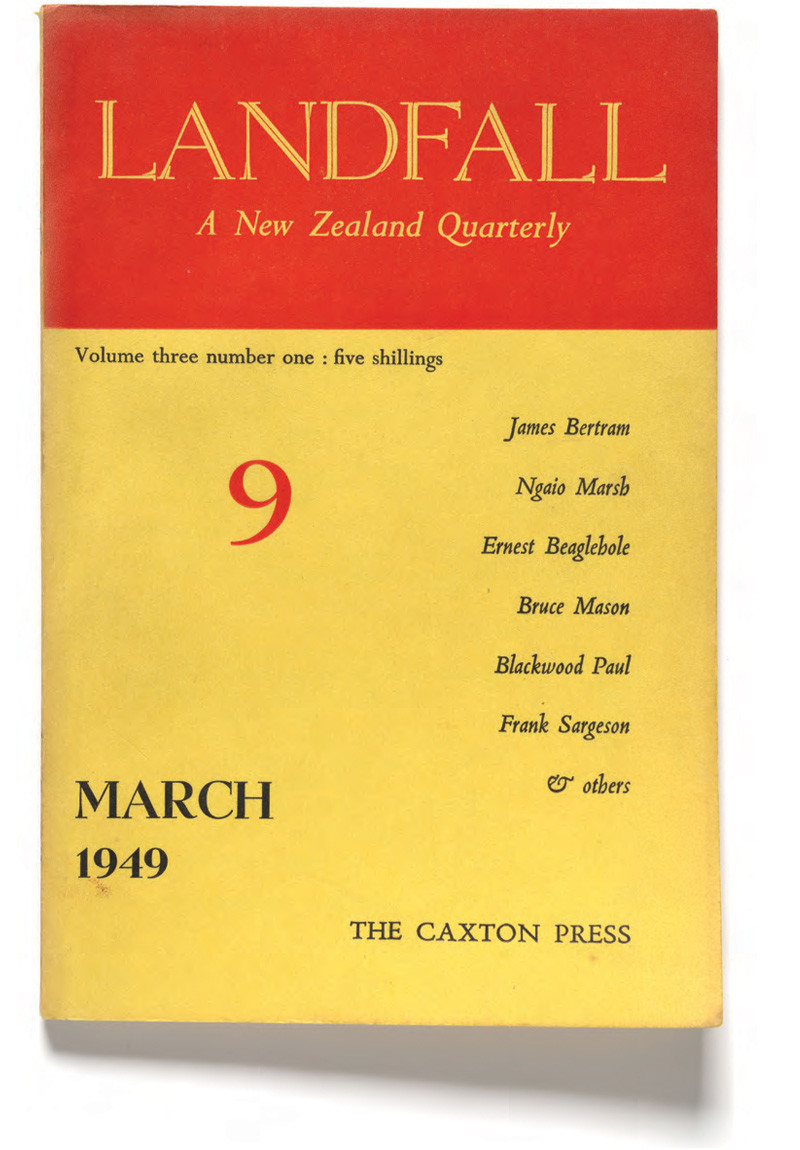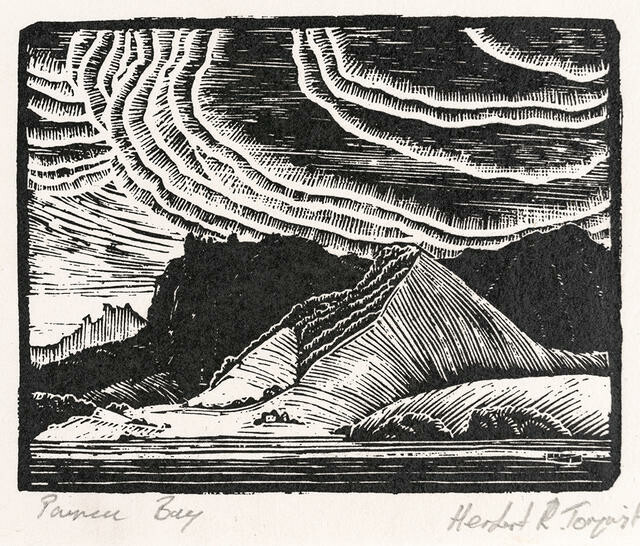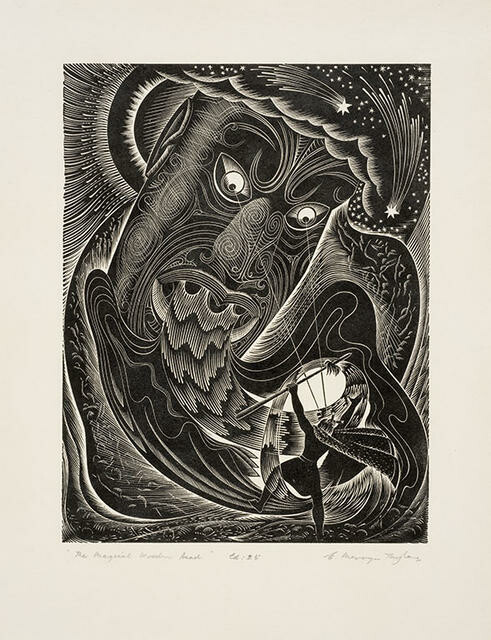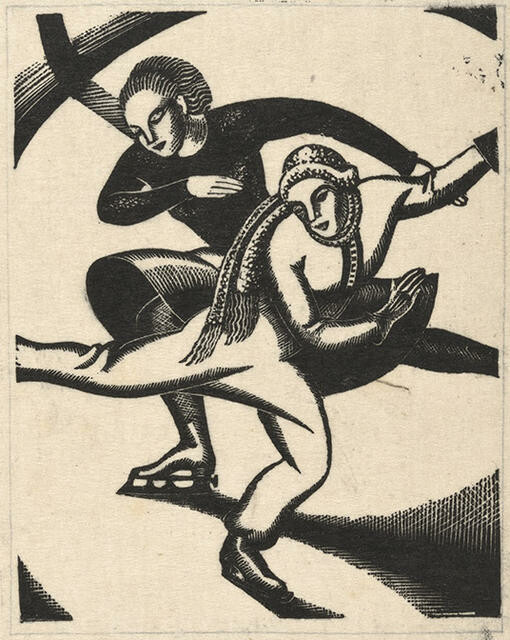B.
Death and the woodcutter by Leo Bensemann
Collection
This article first appeared as 'Death mastered' in The Press on 28 March 2013.
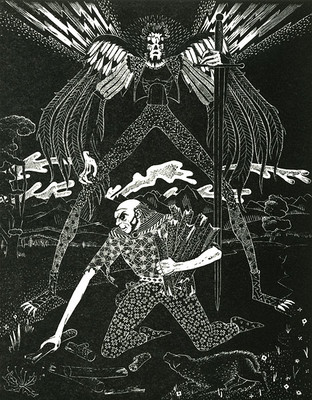
Leo Bensemann Death And The Woodcutter
Collection of Christchurch Art Gallery Te Puna o Waiwhetū; presented by Mr F A Shurrock, 1961
On February 11, 2011 the major survey exhibition Leo Bensemann: An Art Venture opened at Christchurch Art Gallery. It was the first occasion a comprehensive collection of art works by one of Canterbury's most original artists, Leo Bensemann (1912-1986), were exhibited together. Co-curated by Peter Simpson and Noel Waite this exhibition was unfortunately brought to a sudden close just 11 days later with the earthquake on February 22.
One of my favourite prints in Christchurch Art Gallery's collection is Bensemann's extraordinary wood-engraving Death and the Woodcutter. Bensemann infuses his own unique graphic style into the age old Aesop fable in which an old man grows tired of collecting wood and throws his pile to the ground yelling out "I cannot bear this life any longer. Ah I wish Death would come and take me!" To which Death suddenly appears saying "What wouldst thou, Mortal? I heard thee call me." The Woodcutter timidly replies "Please sir, would you kindly help me lift this bundle of sticks onto my shoulder?" The moral of the story being that we would often be sorry if our wishes were fulfilled.
Completed in the early 1940s, Bensemann's representation of Death has some of the qualities of a 1970s heavy metaller adorned with a glam rock styled feather cloak. He dominates the scene standing intimidatingly over the old man, his hand resting on a massive sword. The old man's dog cowers with his tail between legs trying to slink away unnoticed. Bensemann depicts this ancient fable within a familiar Canterbury landscape, the plains leading to the foothills and Sothern Alps beyond while the cloud formations are instantly recognisable as Canterbury's distinctive nor'west arches.
A notoriously difficult medium to work Bensemann's wood-engravings are exceptional not only in his masterful technique but also his unique vision and fantastical interpretation of his subject matter. The detail of line in Death and the Woodcutter is stunning, the lightness of Death's delicate feathered wings contrast strongly with the energised lightening bolts emanating from behind his back. The patterns in both the Woodcutter's and Death's clothing is also striking particularly the repeated criss-cross of human bones used on Death's trousers and jacket. Engraving detailed work such as this requires great skill, care and patience on the part of an artist and these virtues are all exemplified by Bensemann in this work.
Bensemann's wood-engravings easily stand up alongside some of the great 20th century British wood-engravers such as Eric Gill, Gwen Raverat, Gertrude Hermes and Eric Ravilious. These artists he greatly admired yet living in New Zealand he only got to view their work as reproductions in books, many of which were gifted to the Christchurch Art Gallery's Library by his wife Mary.
Death and the Woodcutter is an extremely rare print being one of only two known original impressions made by Bensemann. It was presented to the Gallery by Bensemann's friend, fellow Morris dancer and artist, Francis Shurrock in 1961.
